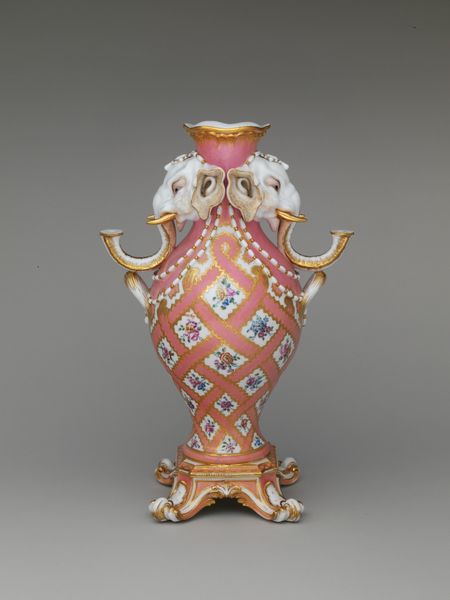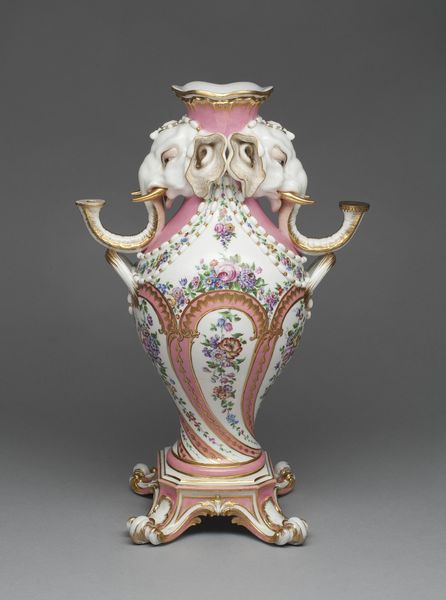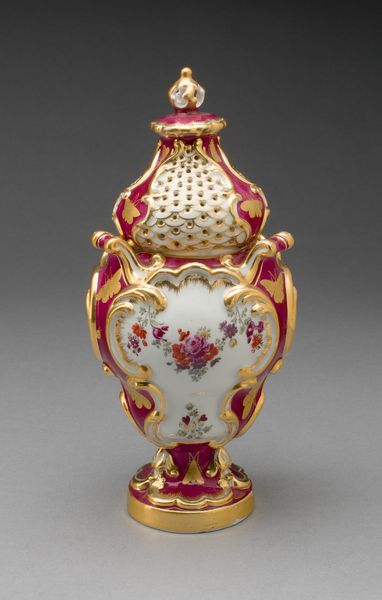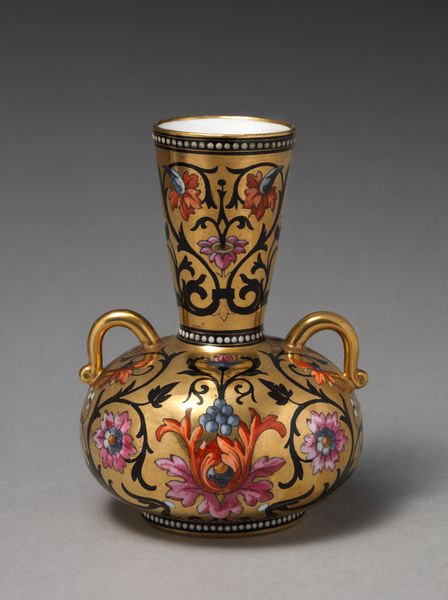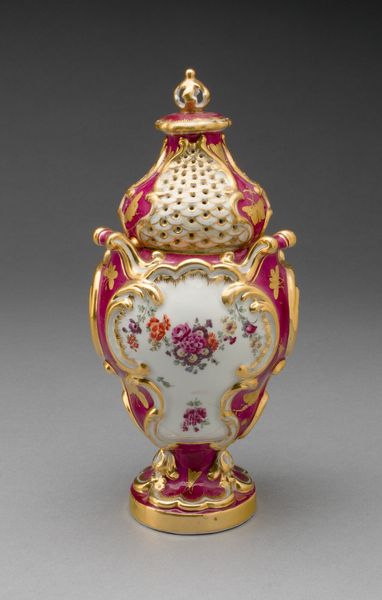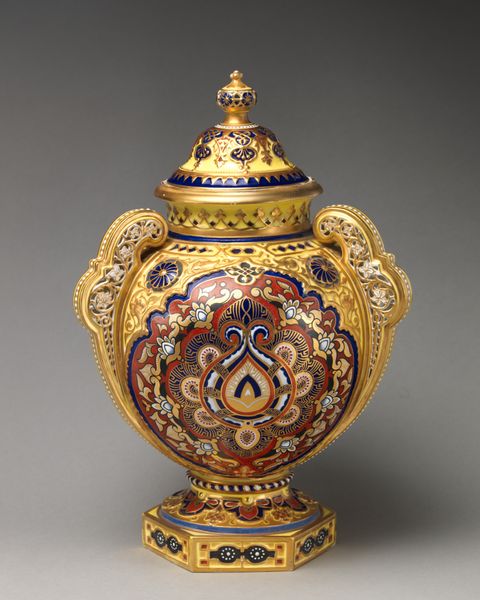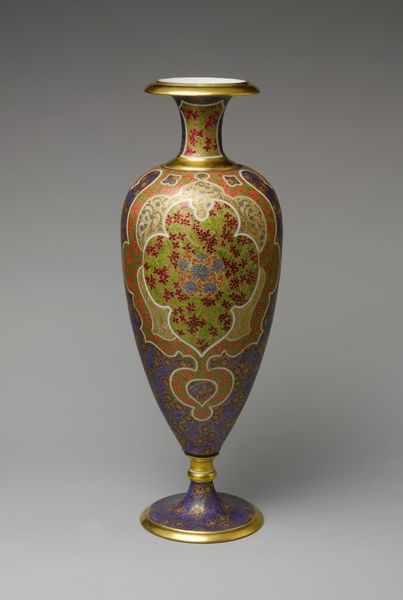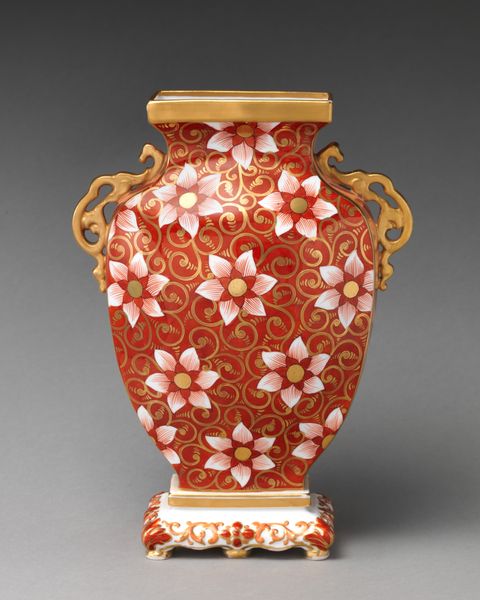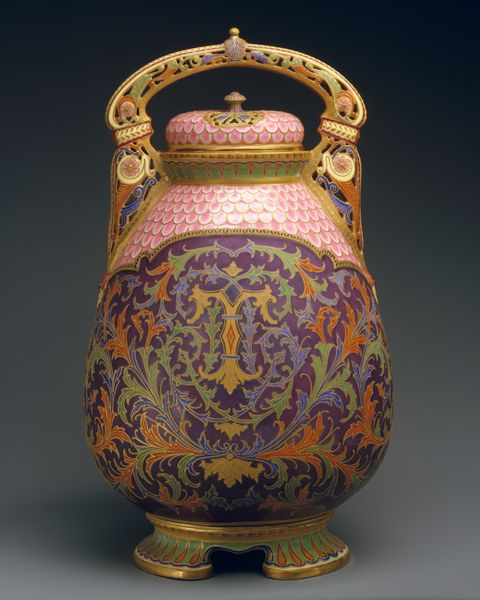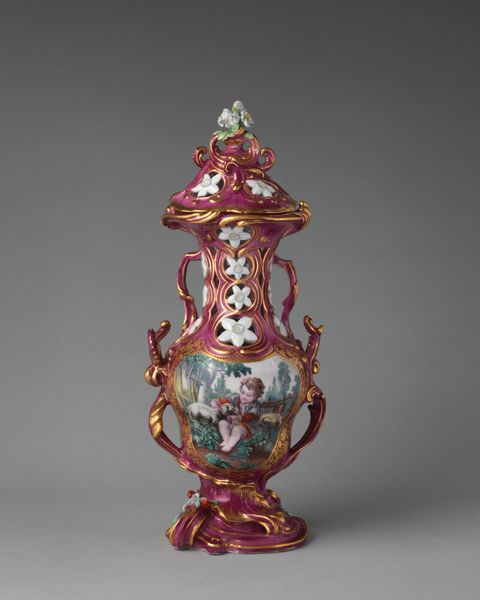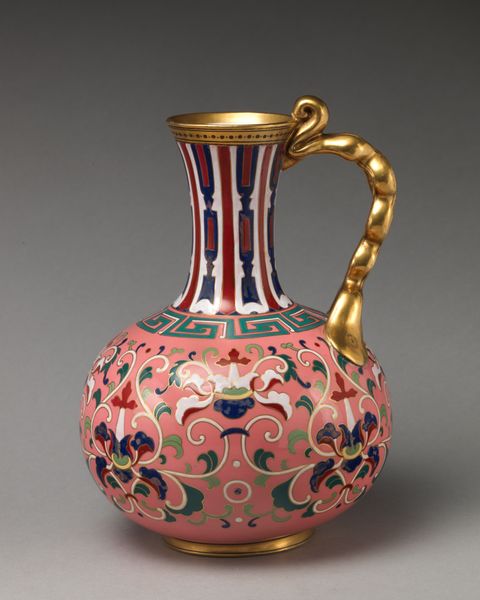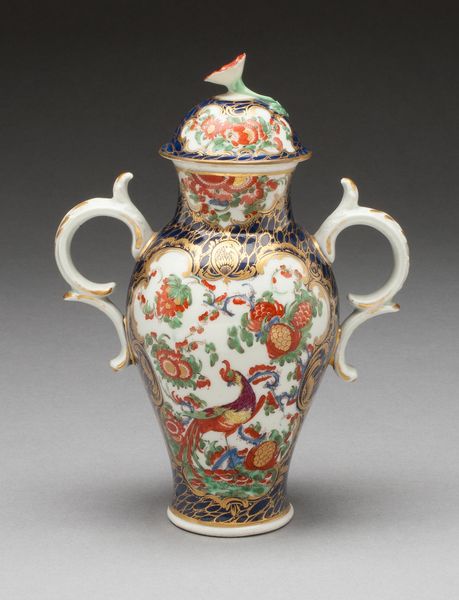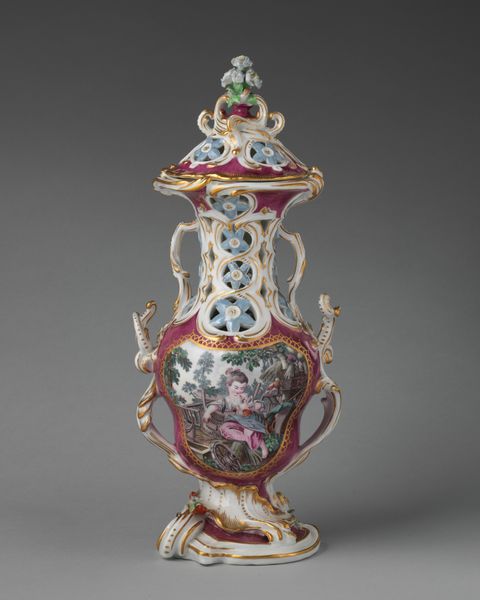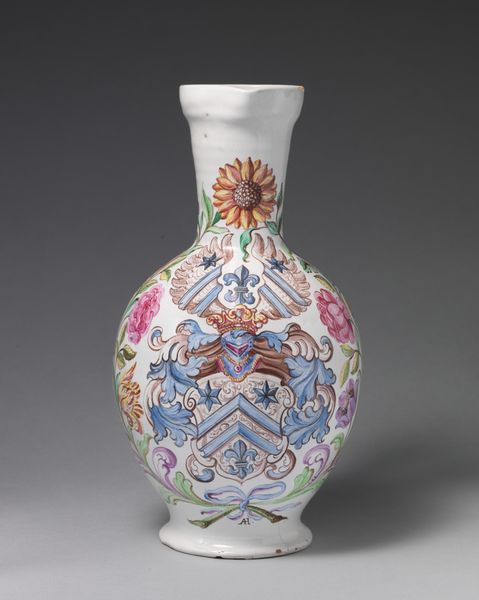
Vase (vase à tête d'éléphant) (one of a pair) 1753 - 1763
0:00
0:00
ceramic, porcelain, sculpture
#
ceramic
#
porcelain
#
figuration
#
sculpture
#
ceramic
#
decorative-art
#
rococo
Dimensions: Overall (confirmed): 15 7/16 × 10 5/16 × 6 1/4 in., 6lb. (39.2 × 26.2 × 15.9 cm, 2.7443kg)
Copyright: Public Domain
Editor: Here we have a porcelain vase, created between 1753 and 1763 by Jean-Claude Duplessis. It’s called "Vase à tête d'éléphant", or "Vase with elephant heads." It's very… pink! And the elephants seem like such an odd choice of decoration. How do you interpret this work? Curator: Well, first, consider the context: 18th-century France. Rococo was all the rage, with its emphasis on luxury and exoticism. Elephants, for Europeans, were these magnificent, almost mythical creatures. How do you think that translated into the use of ivory, in contrast? Editor: I hadn’t considered that – this isn’t ivory, but it does evoke it, doesn’t it? So it’s less about the animal itself, and more about... demonstrating access to luxury materials and faraway places? Curator: Precisely. The French court often used art to project an image of power and sophistication, what the scholar Joan Landes has framed in terms of a carefully curated "public sphere." How does this vase, with its delicate pink and floral patterns, contrast with the colonial connotations of those materials? It's an uncomfortable tension, isn’t it? Editor: Absolutely, this vase suddenly feels… complicit. What was once an object of simple beauty is also now a reminder of wealth extraction, even exploitation. It does kind of ruin the beauty, actually! Curator: It forces us to confront the complexities of history, doesn’t it? Beauty, in this context, cannot be separated from the power structures that produced it. How might we then appreciate the technical skill while remaining critical of its implications? Editor: I guess, seeing that beauty, acknowledging the artistry, but constantly interrogating the history behind it, keeping that conversation alive. Thanks, I’ll never see Rococo the same way again! Curator: And that’s the power of art history – not just to describe beauty, but to dissect its social and political DNA.
Comments
No comments
Be the first to comment and join the conversation on the ultimate creative platform.
